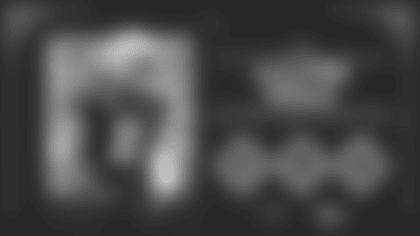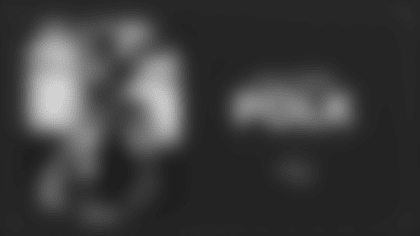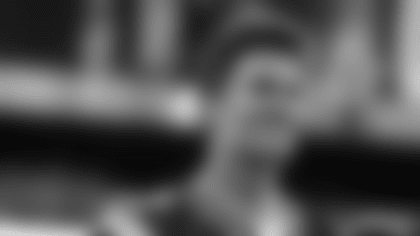Ever since the Patriots were tabbed with the third overall pick in next month's draft, opinions on how to best use it have flown all over New England.
Take a quarterback.
Take Marvin Harrison Jr.
Trade down and stockpile picks.
Those are the three most popular options, and most believe strongly as to which road should be taken. But there's one ideology that seems to be gaining steam that is hard to understand, and it's been espoused by many national pundits. The Patriots shouldn't take a quarterback because the roster isn't ready for one.
When did this mentality become mainstream? When did a certain level of team-wide talent become a prerequisite for drafting a quarterback?
In reality, this logic is counterintuitive. The vast majority of teams picking near the top of the draft do so for a reason: they're not good enough to win games. Does that mean those teams shouldn't pick quarterbacks because the rosters aren't ready for them?
That's what ESPN's Dan Orlovsky suggested with regard to the Patriots. Jerod Mayo and Eliot Wolf should look elsewhere because the current roster isn't ready to support a rookie signal caller trying to make his way into the league. It's an absurd notion that somehow seems to be generating some support.
The Bengals were the worst team in football in 2020 when they chose Joe Burrow. Two years later they were in the Super Bowl. The Texans were in the bottom five last year before taking C.J. Stroud. Now they're AFC South champs.
Those two rosters weren't all that different from what the Patriots have now. Both teams had holes to fill, and both watched talented quarterbacks fill them effectively while lifting those around them.
There are other examples like the 2-14 Colts in 2011 that suddenly were a playoff team with rookie Andrew Luck in 2012. Baker Mayfield inherited an 0-16 roster and was in the playoffs by his third season. Even the Jags were a playoff team in Year 2 of the Trevor Lawrence era. These teams didn't have any fewer questions before quarterbacks solidified their operations.
Obviously, there are countless examples where the quarterback doesn't pan out. Bryce Young struggled badly as a rookie in Carolina last season. Zach Wilson, Sam Darnold and Mitch Trubisky are just three recent examples of quarterbacks going to struggling teams and failing to excel.
An argument could be made that those failures were due more to the individuals than the lack of support around them. The Jets in particular possessed a solid foundation of talent around Wilsonand yet still the former second overall pick failed to live up to expectations.
This notion that it's silly for the Patriots to take a quarterback because the roster isn't strong enough to handle it is just that – silly. Evaluate the players and make decisions based on those evaluations. If the scouting work suggests that Drake Maye (of whichever quarterback is available at 3) is worthy of selection, the Patriots should sprint to the podium with their draft card and get started on developing their new franchise centerpiece. If not, then Mayo and Wolf should look in a different direction.
But having enough pieces in place around the quarterback should not be a determining factor. In reality, the Patriots wouldn't be picking third if that kind of talent existed in the first place.
Cha-cha-changes
The NFL's annual meetings are taking place in Orlando, Fla., and a number of rules proposals were evaluated by the league's owners. Among those that generated the most buzz are the banning of the hip-drop tackle and changes to the kickoff rules.
Both the kickoff and tackling ban had significant backing from the league and therefore seemed destined to pass. The kickoff change will feature alterations to alignments that will help make the play safer while also encouraging more returns. The format calls for 19 of the 22 players to be aligned within 10 yards of each other. Only the kicker and two returners will be outside that box and would be allowed to move prior to the ball being kicked.
The kickoff takes place at the 35, as has been the case, but the rest of the kickoff team lines up at the opponent's 40. The receiving team will have nine players lined up between its 30-35, limiting the high-speed collisions that caused many of the injuries in the past. There will be a landing zone for kickoffs between the goal line and the 20. Any kick that hits in the landing zone must be returned. The 19 players aligned in the field can't move until the ball hits a player or the ground in the landing zone. The receiving team must have two returners aligned in the landing zone who can move at any time. The kicker can't cross the 50 until the ball hits in the landing zone.
The idea is that requiring two returners will create more returns, making it more difficult for kickers to place the ball in the landing zone. The new rules will also have three levels of touchbacks. A kickoff that flies out of the end zone, or is downed in the end zone after reaching it on the fly, is a touchback to the 35. This is to encourage kickers to keep the ball within the field of play. A kickoff that hits the ground in the landing zone, rolls into the end zone, and is downed will be a touchback to the 20. This is to encourage the receiving team to return kicks. A kickoff that hits short of the landing zone will be treated the same as a kickoff out of bounds. The play will be immediately blown dead and the ball will be placed on the 40. Ostensibly this would discourage kickers from hitting line drives that would bounce into the end zone.
The fair catch would be outlawed on kickoffs. Last year's rule, which allowed for a touchback to the 25 on any fair catch, would be scrapped. Because of the formation rules, the surprise onside kick would also be eliminated. Teams will only be allowed to attempt an onside kick in the fourth quarter if trailing, and must inform the officials beforehand. The league's previous rules governing onside kicks would remain.
NFL Operations tweeted out an instructional video to make these changes easier to understand.
The hip-drop tackle controversy has grown in recent seasons as several injuries have been attributed to the technique. It's a variation of the Seahawks rugby-style tackle where the defender wraps up a ball carrier and twists him to the ground while "unweighting himself" as he takes the player down. The league says this technique has an injury rate that is 20-25 percent higher than the normal tackle.
While the kickoff changes should create more action, this move seems ripe for controversy. Back in 2005 the league banned the horse-collar tackle, and after some time both the players and officials adjusted accordingly. This ban, which will result in a 15-yard penalty, will be much more difficult to identify and enforce, not to mention add yet another obstacle to the ability to play defense.
No one wants to see injuries and promoting player safety makes sense, but at some point the league needs to understand that there are inherent risks to playing the sport and trying to legislate them all out of the game is counterproductive. The hip-drop tackle is an example of going too far, and it will be a mess.
DISCLAIMER: The views and thoughts expressed in this article are those of the writer and don't necessarily reflect those of the organization. Read Full Disclaimer











































